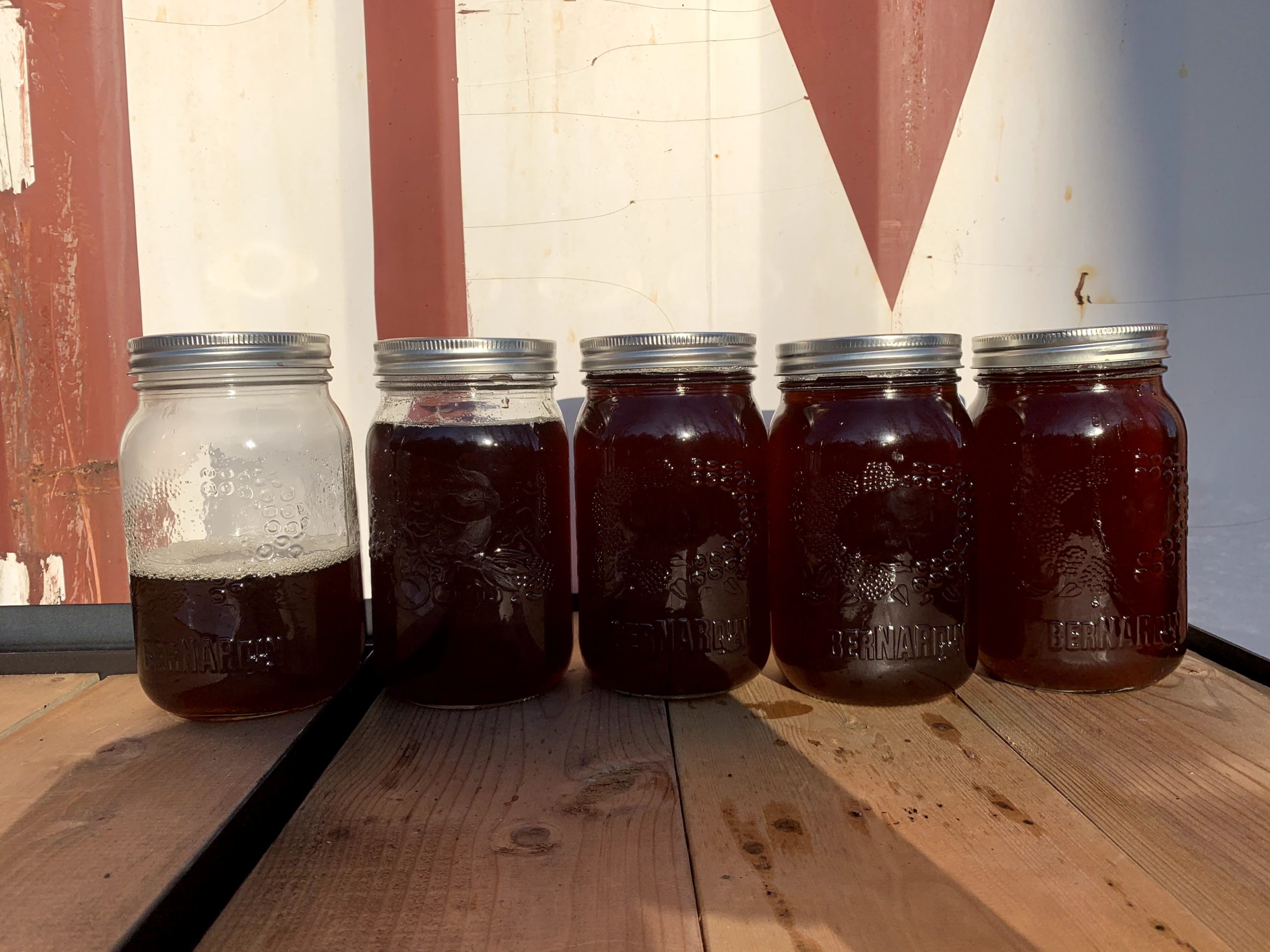By Hayley Visentin
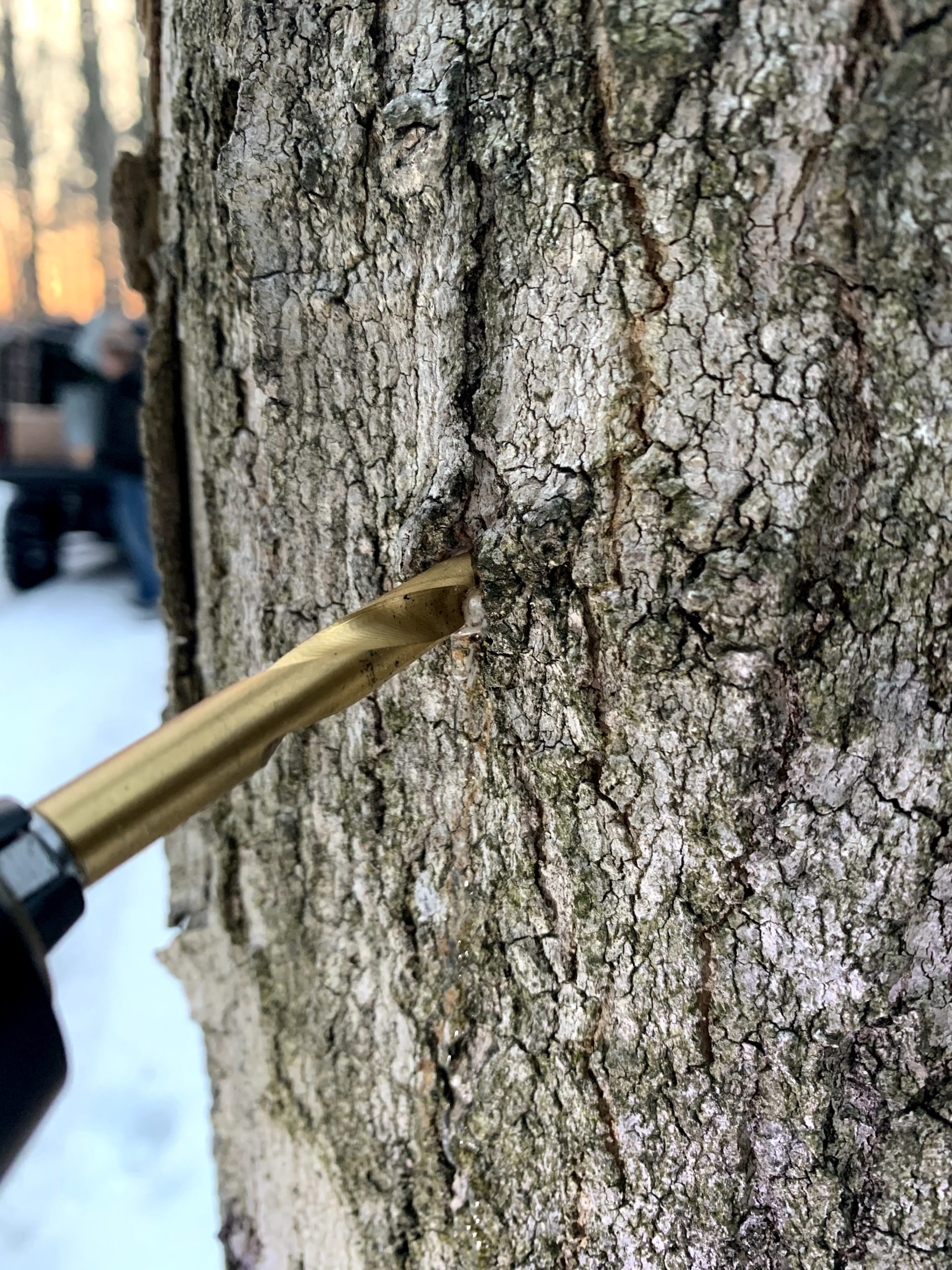
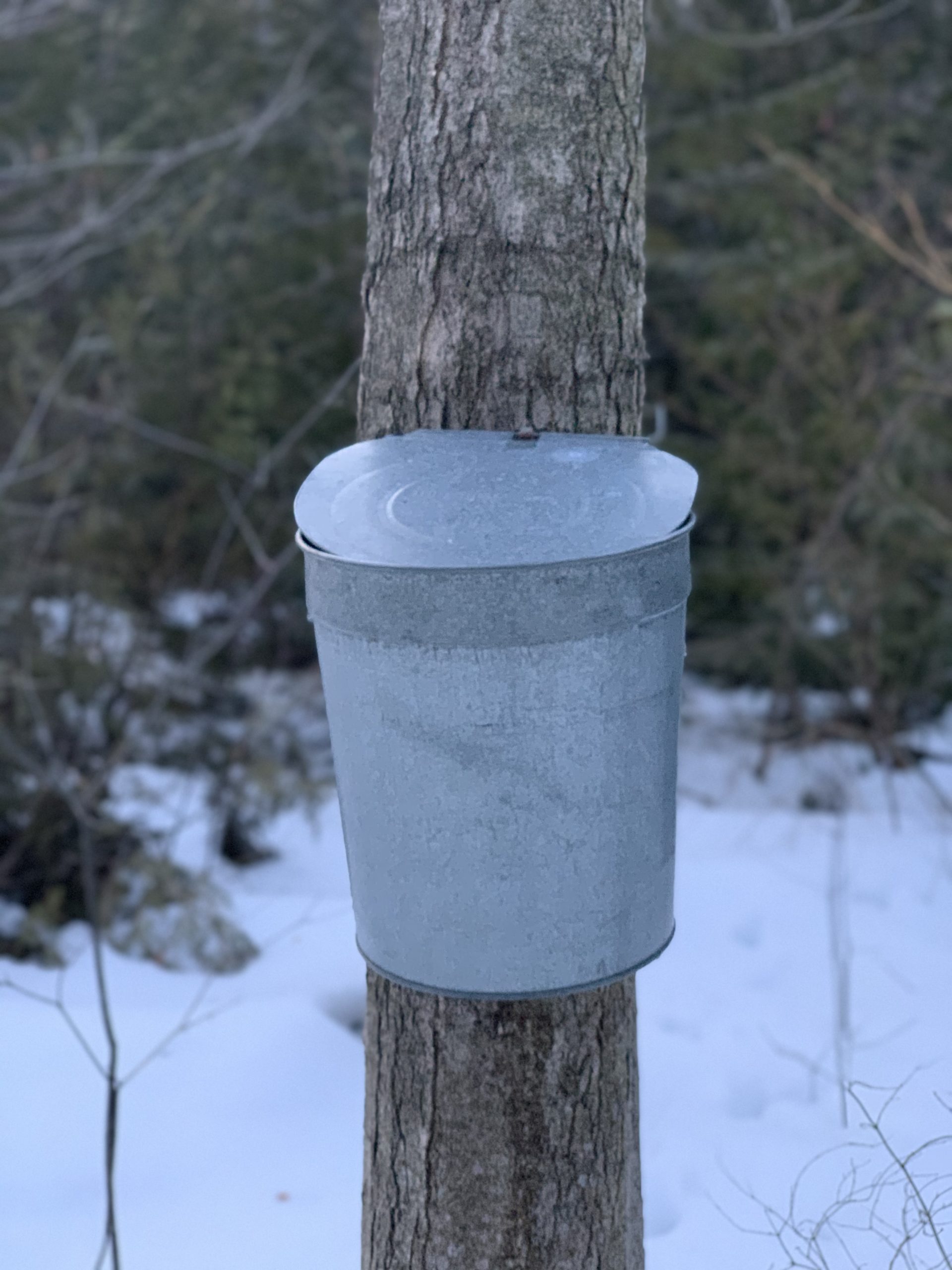
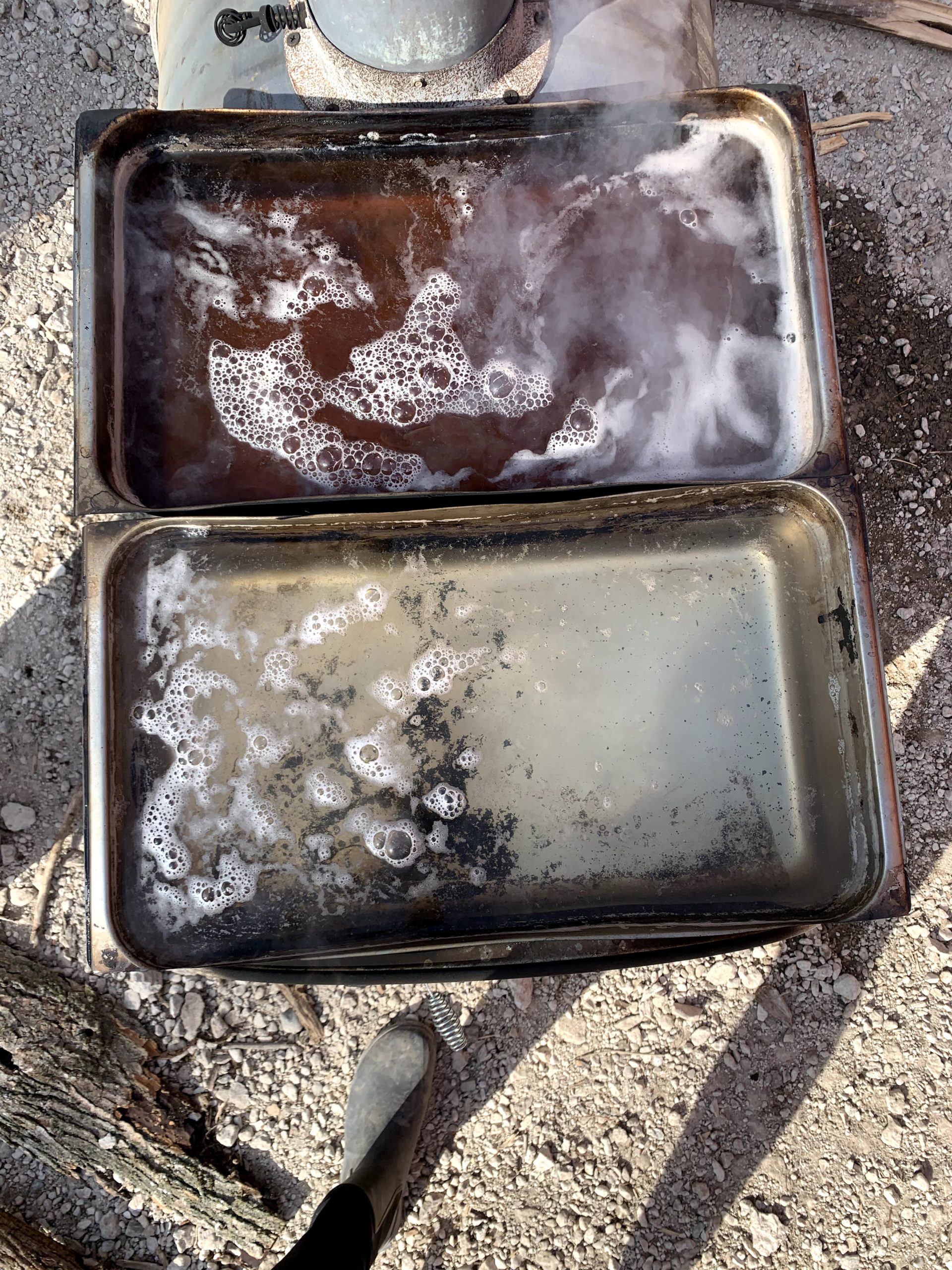
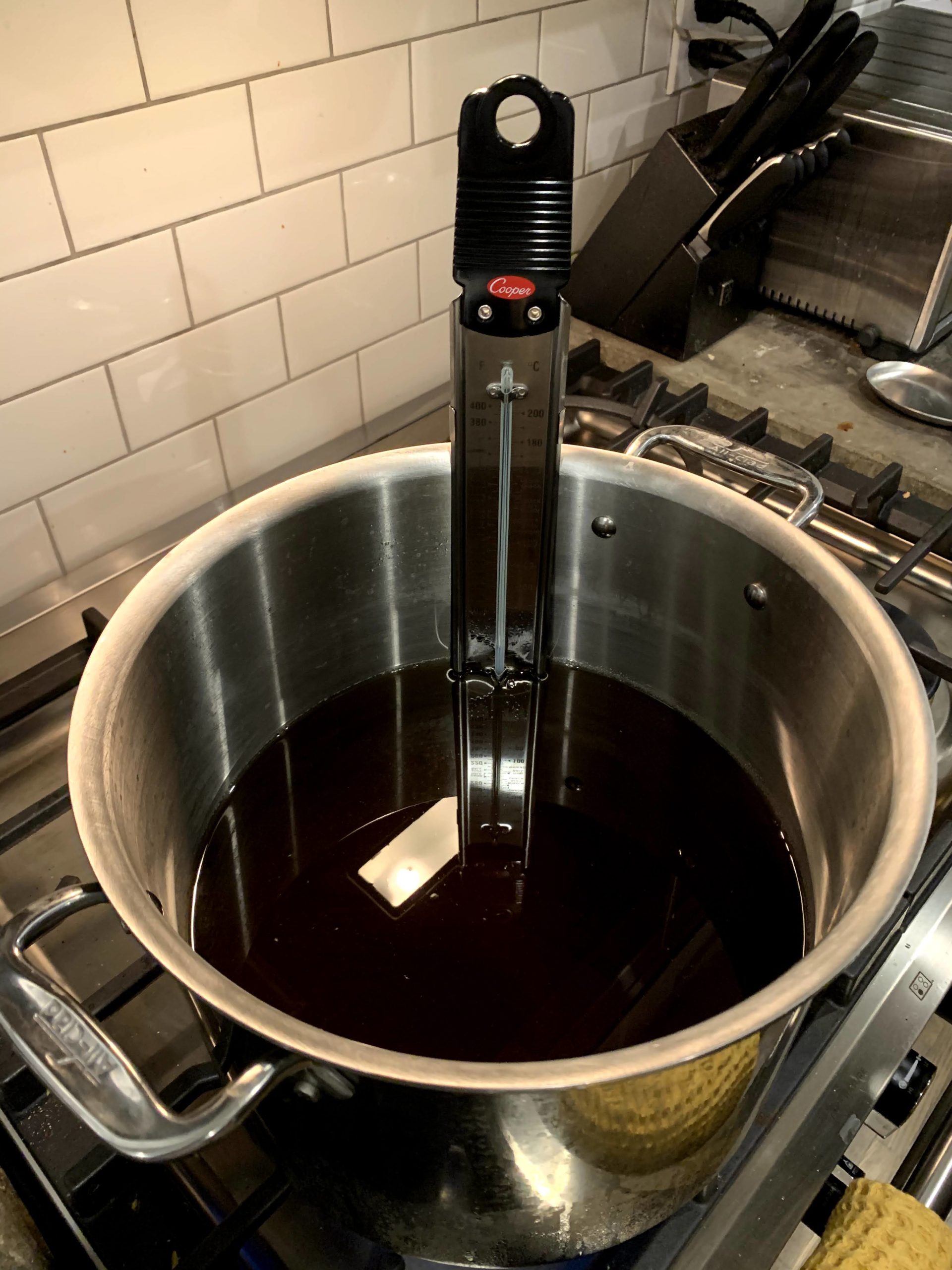
It is important to recognize Indigenous maple syrup origins; learn more about maple syruping from the Cooksuk Abenaki Nation and the history of maple syrup from the Maple Valley Cooperative.
Before I began tapping trees, I always felt making my own syrup was out of reach. Southern Ontario, the region I reside in, has an ample supply of seasoned maple syrup producers; each winter growing up, my nan would take me to festivals and sugar shacks to learn about the process. During the drives through the country to the festivals, I would observe hundreds of blue and silver buckets on display, clinging to the trunks of large maples, often interconnected by an intricate web of tubing. Growing up around these giants, I always thought this was a profession that required significant capital and time; while syrup making is a passion project, I’ve found it is well worth the time you put into it. Presently, my partner and I live in the country and are fortunate to have a small stand of sugar maples on our property. We tap these to bottle syrup for our family and friends and as a hobby, alongside a budding floral farm.
This isn’t a guide or explicit how-to; as a hobbyist, I find that I puzzle-piece my own methods through researching other people’s techniques and using what I have available to me. This is my story on how I started making maple syrup for my family in rural Ontario. Take what serves you and leave what doesn’t; there are many ways to achieve the same rewards — time outdoors, delicious syrup, and sharing your end results with your loved ones. I hope this journey is as rewarding for you as it has been for me.
How to Get Started
First things first, if you don’t have access to a maple stand, you’re not getting very far. Purchasing forested land or planting saplings are not avenues that I’d recommend exploring to start a new hobby. If you have sugar maples on your property already, you’re one step ahead; if you don’t, there are a few other (free) ways to get involved in the process:
- Volunteer at a local maple syrup operation or organization.
- Ask farmers to tap the maples along the side of their fields.
- Find a family member or friend with a maple plot.
- Post an ad to see if others with land are interested in a trade.
Tapping + Storage
In Southern Ontario, we typically begin tapping in the first weeks of March, but this timing will be dependent on your climate. Sap will flow during days when the temperature is above freezing and nights are below freezing (32°F/0°C). This change signals that it’s springtime and causes the tree to draw its stored resources upwards. Tapping on the first day, you notice this temperature change may not get you a head start. Waiting until the change is consistent will save you time and resources as sap has to be evaporated within 48 hours of collecting.
A few important things to keep in mind:
- Size – tapping a tree smaller than 12” isn’t recommended. It can influence growth, create an entry point for disease/pests in a less mature tree, and have a low sap yield.
- Clean – any piece that will be introduced to the tree must be cleaned before setting your spiles (drill bits, spile).
- Fit – you’ll need the spile to fit snugly into the hole you’ve drilled. The bit is dependent on the size of spiles you have, so bring a few.
Identifying sugar maples in the winter months can be challenging when all the leaves have fallen; a foolproof way to avoid this is to ID and tag your trees in the off-season. We didn’t think ahead and found some other ways to ensure we had the right trees. If you’re working with a farmer, organization or friend, have them point you in the right direction.
In the winter we were able to identify the sugar maples by the old leaves we found on the ground as well as their bark.
- Sugar maple leaves will have 5 main lobes, have smooth edges without spikes or serrations, and have a U shape between the lobe + point.
- Older trees will have thicker trunks and flaky bark while younger trees will be smaller in diameter with smooth gray bark instead. Remember, we aren’t tapping anything narrower than 12 inches, so keep this in mind when tagging your trees.


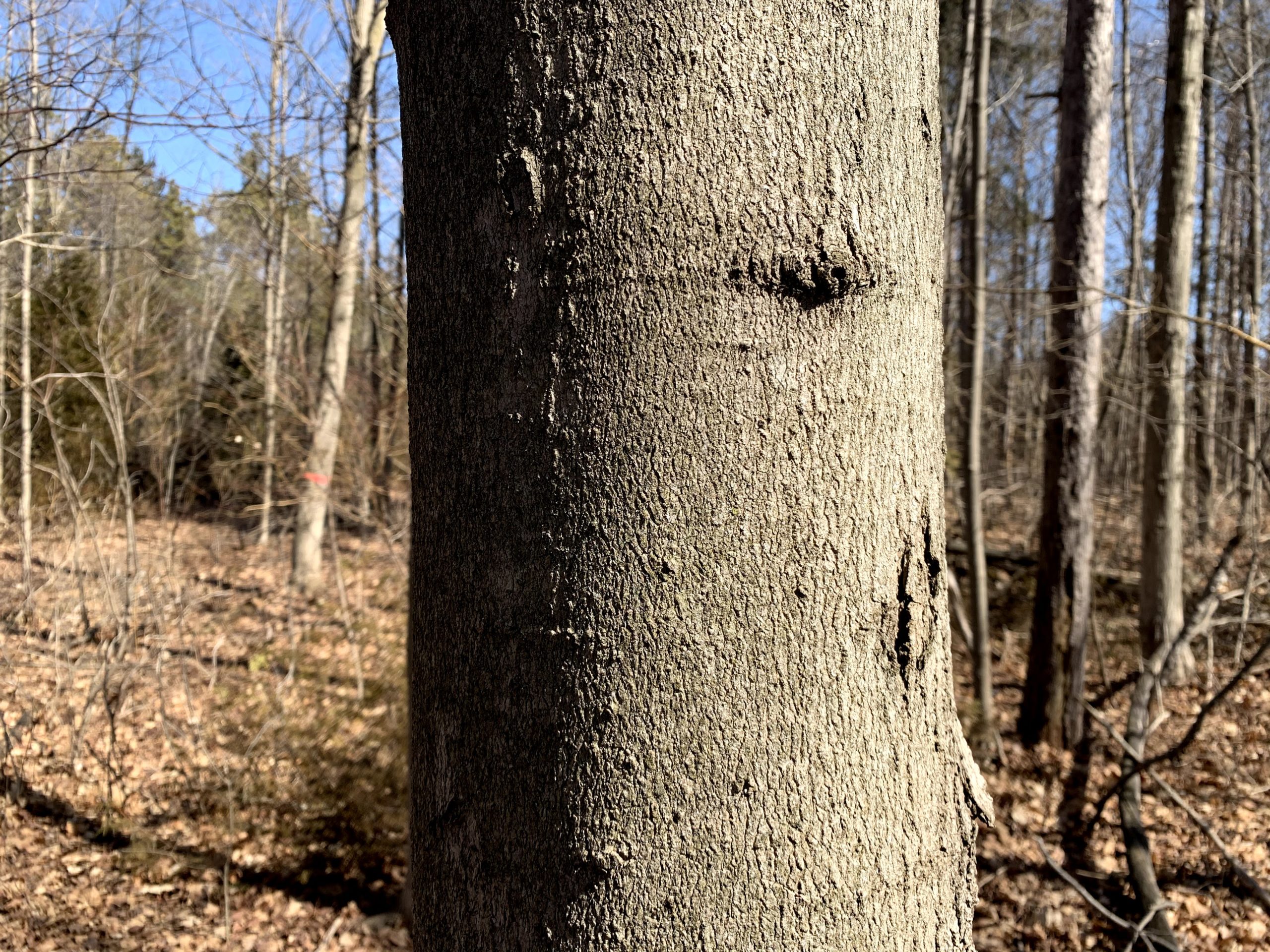



Equipment List
- Cordless drill
- Drill bits (the size will depend on the size of your spiles)
- Buckets with lids
- Spiles
- Hammer or rubber mallet
- Wire sieve
- 5-gallon food-grade buckets
- 25-gallon storage tank
Once you’ve found your trees and are ready to tap, use your drill to make a hole around chest height, remove any wood debris from the hole, insert your spile and tap it into place with your hammer/mallet (I personally, am not that fancy and used a log I found on the ground instead). Hang up your bucket and you’re done!
Check in on your trees at least once a day when you experience a cool night with a warm day, as these are peak sap days. You’ll begin to understand how the weather affects your trees as you check on your sap more often (in the first couple of weeks, I could be found running into the forest and using my phone flashlight late at night because a more experienced friend told me how full their buckets had been that afternoon).
Set up your buckets as close to the stand as possible. Combine sap from each tree into a 5-gallon pail and store this in a larger food-grade bin (I used a 25-gallon rain barrel from Facebook Marketplace that I had cleaned out prior to the season). The sap has to be kept cold to reduce the rate of bacterial growth; this past season I left mine outside in the snow and had no issues. When pouring into your storage bin, use a large mesh sieve to filter out any leaves or debris that may have fallen into the bucket. Once you’ve collected the sap it must be evaporated within 48 hours.
Evaporating
Evaporating sap is the most time-consuming part of the process and has to be done frequently in order to stay on top of the supply and any potential contamination; with 14 trees, I budgeted roughly 4-6 hours every two days. If you are low on time and/or have a rigid schedule, evaporation can be done at night or in shifts with some friends or family. Making syrup as a hobbyist attracts old friends and family members to the land; sharing this knowledge over a drink in the maple stand is as rewarding as the finished product, and often results in some volunteer help!
A quick Google search will result in some very tempting, but very expensive evaporator options. These are great if you have the sap supply, customer base, and capital for it but are targeted toward a producer scale. There are a few much cheaper options that take an afternoon and some creativity.
- Contain a fire using stacked cinder blocks + rest chafing pans above the fire for an easy fix. Bonus: you now have holes in the blocks to roast snacks on the fire!
- Skip the structure altogether + get a large, rectangular metal pan. Balance it over the fire using whatever non-flammable materials you have. Rocks are a good option, and free.
I chose a DIY method that cost approximately $180 CAD (about $143 USD); this provided me with a stove that I could use annually and would allow me to easily stoke the fire.




Equipment List for Evaporator:
- Woodfire Stove Kit
- Includes 2 sets of legs, a door, flue collar, damper, and all hardware.
- 2 Chafing pans
- From a local kitchen supply store.
- 1 Galvanized steel drum
- From Facebook marketplace.
- Fire bricks
- From a local maple supply store.
- Metal flue and cap
- Angle grinder with a metal cutting disk
- Cordless drill
- Safety glasses and gloves. The cut metal edges get quite sharp.
- Permanent marker
Equipment List
- An evaporator
- High heat oven mitts
- Ladle
- Orlon filter
- Wire sieve
- Pitcher
- Firewood
- Mason jars
- Time 4-6 hours
Once you’ve built your evaporator and collected your sap, you’re ready for your first boil. Start up your fire in your evaporator and continue to stoke it throughout the boil. There are two chafing pans that fit snugly into the top of the barrel. Add sap to both pans using the pitcher to draw from your storage tank, pouring it through the orlon filter. Fill the front pan ~⅔ full and the back pan ⅓ full to get it started. The front pan starts the evaporation process; as the sap boils, it will concentrate and become darker. The back pan is where I finish the evaporation process, reducing it enough that it becomes a dark malt color. When my front pan begins to shift from clear to amber I ladle it into the back pan and refill the front with fresh sap. As you boil, you’ll notice a layer of dense bubbles forming on the surface; these are impurities from the sap. Use your wire sieve to skim these off periodically. This process repeats for hours, and it’s tempting to wander away during this time, be careful if you do. If the sap evaporates enough and hits the finishing stage it will change in an instant, going from a steady boil to burnt syrup in seconds.
Once you’ve made it to the end of your sap supply and the front pan is amber, grab your high-heat oven mitts and pour the contents of the front pan into the back pan. Give your front pan a rinse while the back pan continues to boil down. Once the contents are a deep brown but still runny, pour them into your clean storage vessels. I use large mason jars. Take these home with you and store them in the fridge until you’re ready to finish your syrup.





Finishing
To get started, empty your evaporated sap into a large pot and set up your candy thermometer. I filled mine about ¾ of the way full to avoid any splashes once it got boiling. You’ll be looking to maintain a rolling boil with large spherical bubbles breaking the surface.
Finishing syrup is a waiting game as you’re looking for the temperature to reach 71°F to begin testing the density of your syrup. The standard density you’re looking for is 66°- 68° Brix. This is measured using a thermometer and hydrometer readings in tandem, as density changes with temperature, so it’s important to take both measurements at the same time. Smokey Lake Maple has a quick and easy reference guide that can be found here for finding that Brix sweet spot.
Equipment List
- Evaporated sap
- Large pot
- Stove or hot plate
- Candy thermometer
- Hydrometer/refractometer
- Bottles
- Time: 45 mins – 2 hours
- Depending on your volume of sap, its sugar content, and volume.
